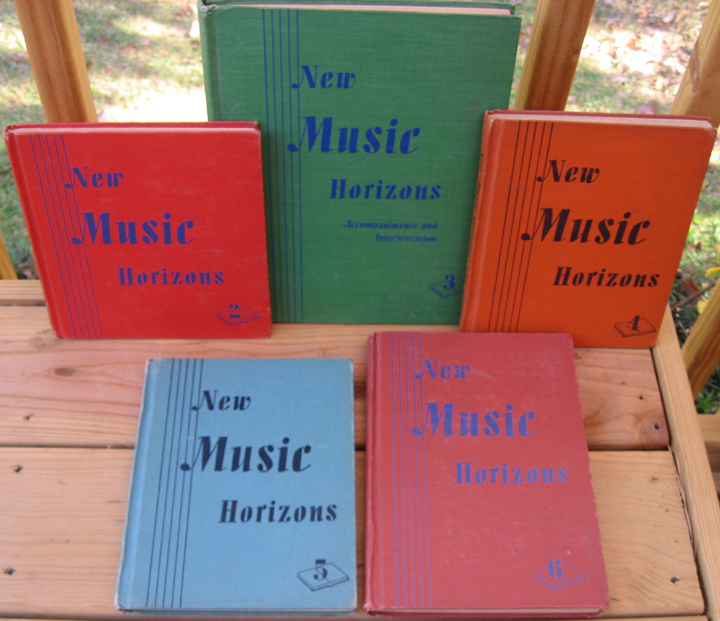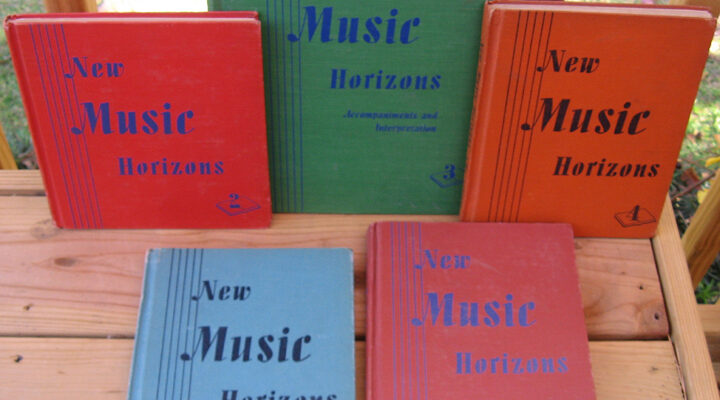I have fond memories of attending Henry Johnson School (W. Market Street opposite Kiwanis Park) in the 1950s. When I transferred there after completing the first grade at West Side School, I received a warm reception from the principal, Miss Margaret Crouch who escorted Mom and me on a tour of the school.
Mrs. Mary Jordan was the school’s music teacher, instructing students in all six grades. Several years later, I enrolled in her husband, Glenn’s, mechanical drawing class at East Tennessee State College. The couple resided in the Franklin Apartments on E. Main Street.
Mrs. Jordan taught us several patriotic songs like “America,” “America, the Beautiful” and “The Star Spangled Banner.” We routinely sang them during her class.

Our textbooks were the “New Music Horizons” series published in 1945 by the Silver Burdett Company for grades one through six. Each book was of a different size and color with the grade positioned on the lower right cover. Over the years, I began collecting them at flea markets and antique stores and acquired five, missing only the first one.
The six books focused on music activities through “singing, playing, dancing, listening and creating.” They were designed to deepen students’ appreciation of their forefathers who were a part of our American heritage. The primary grade books 1-3 provided a period of enrichment that helped prepare the students for more advanced concepts. The intermediate class books 4-6 took the pupils to a higher level of specific skills.
Notes contained at the back of each book provided specific instruction for teachers. The lessons provided the basics for reading music and also taught us about such instruments as the violin, cello, trombone, French horn, flute, trumpet, cornet, clarinet and saxophone in an effort to awaken our interest in instrumental performance.
Mrs. Jordan occasionally brought records to class and played them for us. Some had stories associated with them while others introduced us to light classical music, such as “The Nutcracker Suite” and the Russian composition, “Peter and the Wolf,” by Sergei Prokofiev. I have a set of 78-rpm records that are narrated by Basil Rathbone. They possibly are the same ones she played for us. Another frequently played disc was about an old clock maker. There were a variety of alarms heard on it.
Mrs. Jordan kept a variety of musical instruments in her room for illustrations, but she made it clear to her students that they were to be looked at, not touched or played. She decorated the room nicely around the theme of music. I have always enjoyed music and Mrs. Jordan enhanced my appreciation of it even more.
Our dedicated teacher instructed us in a French song titled “Alouette,” first published in Montreal, Canada in 1879: “Alouette, gentille Alouette (Skylark, nice Skylark). Alouette je te plumerai (Skylark, I will pluck you). Alouette, gentille Alouette (Skylark, nice Skylark). Alouette je te plumerai (Skylark, I will pluck you). Je te plumerai la tête (I shall pluck your head). Je te plumerai la tête (I shall pluck your head). Et la tête (and your head), et la tête (and your head). Alouette (Skylark), Alouette (Skylark), O-o-o-o-oh. Alouette, gentille Alouette. Alouette je te plumerai.”
The folksong, while very easy on the ear, was a bit shocking. It originated from French-Canadian women who sang the ditty while plucking skylarks, considered tasty game birds. Each verse built on the previous verse, much like the “Twelve Days of Christmas, as each part of the bird's body was plucked: la tete (head), la bec (beak), le nez (nose), les yeux (eyes), le cou (neck), les ailes (wings), le dos (back), les pattes (feet) and la queue (tail). Mrs. Jordan never told us what the words meant for obvious reasons.
My thoughts often revert to the five years I spent at Henry Johnson School; it was a pleasant, carefree time in my life.
